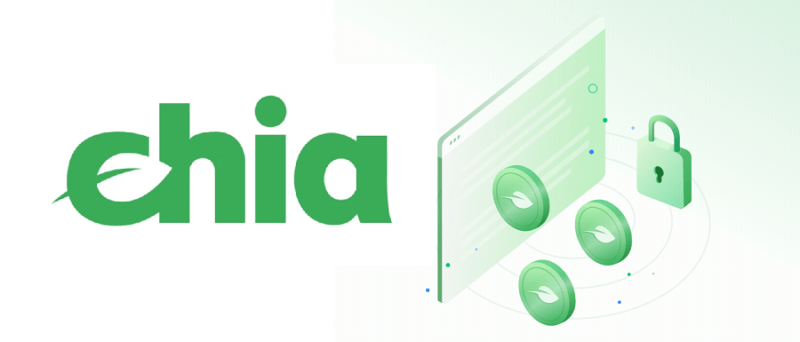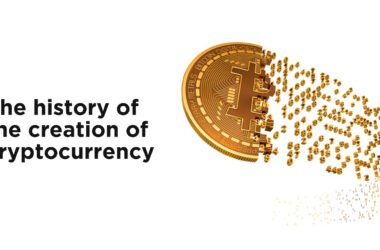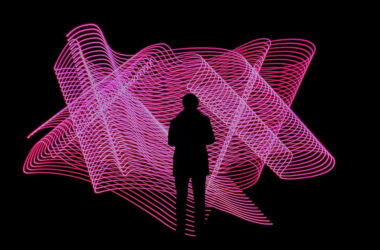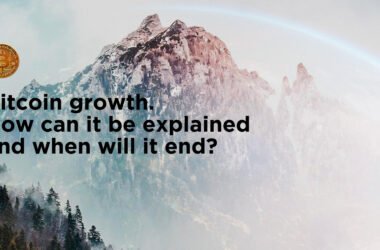Greenhouse emissions are a huge ethical problem of mining. What about forgetting old technologies and change the world of mining with the new approach? Chia cryptocurrency show it’s possible, but is it a big new thing? Let’s discover more about the new promising project that made already lack of hard drives in China and Japan.
Home mining farm for Chia with multiple hard drives
At the end of April, miners in China and Japan began to buy lots of hard drives and SSDs. They were interested in 8+ TB devices. The increased demand led to a local shortage of drives and an increase in prices.
The reason was the launch of the new Chia cryptocurrency from the creator of the Internet protocol BitTorrent. Unlike popular cryptocurrencies of today, Chia mining requires physical storage rather than processing power. The developers are thinking of this approach as an environmentally friendly replacement for the current mining.
He created decentralized networks before it was mainstream
Since childhood, Bram Cohen was fond of mathematics and the theory of algorithms. He was interested in the approach of user equality within the same network. His 1990s project MojoNation was a platform for storing encrypted files piecemeal on multiple computers connected to a network.
MojoNation offered many unique features: end-to-end encryption, transparency for NAT and firewalls, parallel multithreaded downloads. The platform’s monetization eventually failed and the project was closed in the early 2000s.
Bram Cohen used the project’s work for his next product. It was the legendary Internet protocol BitTorrent, which included the application of the same name. The presentation took place in 2001 at the DEFCON hacker conference. In 2004, the BitTorrent company was founded to support the protocol and applications for it.
The popular torrent client uTorrent has also been owned by BitTorrent since 2006
BitTorrent provided people the opportunity to share files online with each other. Torrents have gained immense popularity. The scale is unknown due to the decentralized nature of the protocol. Many disparate networks and services work on the Internet today on its basis.
BitTorrent team believed that about 170 million people use their protocol every month. But it was too hard to get money with this technology. Financial problems and unsuccessful management decisions made the company change its name to Rainberry to be led by the new owner (cryptocurrency startup TRON Foundation).
Bram Cohen disagreed with the changes. He had an interest in cryptocurrencies at that time, but he found the implementation of technology unsuccessful. As a result, Bram left the company he once founded to create his own cryptocurrency Chia (or ChiaCoin), which is practically known as an advanced alternative to Bitcoin.
Why does mining is a problem
Most cryptocurrencies, including Bitcoin, use a proof-of-work approach. Any operation with bitcoins is a complex cryptographic function with a calculated result. These calculations are performed by the network participants. If the result of the calculation mathematically matches the translation, then that translation is considered “proven”.
The “proven” record is distributed across the blockchain. Then, it is impossible to change it. The only way to change it is to change the records on all computers of the network
“Proven” transfers are added as a whole block to the blockchain (open, decentralized database). For each block added, the system issues a reward. At the time this article was written it is equal to 6.25 bitcoins. Network participants create new bitcoins by “proving” bitcoin transfers. Then they can own it. This is known as bitcoin mining.
Mining makes cryptocurrency a reliable means of payment. Each action with bitcoins is related to a lot of calculations with no chance to be faked or canceled. But this also makes Bitcoin an extremely energy-consuming system.
Annual energy consumption at the time of writing
Bitcoin mining takes 130 terawatt-hours of electricity per year at the moment. This figure is higher than the consumption of entire countries like the Netherlands or Argentina. One bitcoin transfer requires 910 kilowatt-hours of energy or 600,000 times more than one VISA money transfer. This energy consumption causes a lot of greenhouse emissions.
At the same time, the complexity of the calculations is constantly growing. If it was enough a single processor for mining bitcoin, then over time, it began to require powerful video cards, and in 2013 they were no longer enough. Now ASIC devices for Bitcoin mining are used. Video cards are now still used for mining other cryptocurrencies like Ethereum and Litecoin.
ASIC Mining Farm by Bitmain
What is Chia and how it can solve Bitcoin problems
The new cryptocurrency uses a proof-of-space-time approach. It was presented by Chia authors in two articles for the International Association for Cryptographic Research.
Any Chia transfer between network participants is a cryptographic function, like in Bitcoin, but its result doesn’t need to be calculated but found in ready-made tables. If someone from the network participants found the “win” result in the table, it leads to the “proven” action. Further, transfers are added in blocks to the blockchain. Participants who find them receive a certain amount of ChiaCoin as a reward.
This process is called Chia farming, similar to Bitcoin mining. It requires free space on hard drives or SSDs to store tables of ready values instead of resource-intensive computing. The more of these tables a network member has, the higher the chances that they contain the next “proof”.
Chinese manufacturer Onda already offers a motherboard that can connect up to 32 hard drives or SSDs – a specialized solution for Chia farming
First, the drives need to be filled with tables. This is a computational process known as plotting. Chia plotting is easier than mining other cryptocurrencies because it does not calculate a specific value, but generates many random values. A regular processor is enough for work.
Moreover, ChiaCoin’s algorithms are created so that the increase in computing power does not provide an advantage in farming. It is part of the Chia “proof of time” mechanism.
Solid-state SSDs need up to 6 watts, and hard drives requires up to 12 watts. This is a low price. Processors can consume several hundred watts during table generation. However, Chia plotting only takes a few days or weeks. The subsequent pharming process requires the computer to look for the specific values in the tables. This is a very easy task that even weak processors can do.
When mining cryptocurrencies, video cards consume up to 450 watts of energy, “ASICs” – up to 3300 watts, and mining goes on non-stop, for years. Therefore, ChiaCoin farming promises to be much more energy-efficient than Bitcoin mining in hundreds and even thousands of times.
The concept has a strong interest in the industry. In the early stages of development, Bram Cohen and his colleagues received millions of dollars in investment. In February 2021, they released the business documentation for the project, and on May 3 they plan to launch Chia translations online. This is the moment when the new cryptocurrency will begin its full-fledged existence. But the closer this date, the more questions, and doubts ChiaCoin raises.
Chia problems
The threat to the storage devices market
The growing interest in Chia pharming is likely to lead to a lack of high-volume drives. This inevitably follows from the principle of the new cryptocurrency. The first stable release of Chia’s software on April 17 immediately sparked a surge in demand for hard drives in China. 8, 12, 16 TB models began to disappear from stores, and their prices soared.
Similar problems are in Japan. People are ordering dozens of large hard drives, which has caused some stores to run out of stocks of 8TB or more models. Other stores have had to impose restrictions on retail.
The deficit may have come to such countries as Russia as well. At least in some stores, hard drives and large-capacity SSDs began to disappear from sale.
There is no big demand for SSD solid-state drives yet. It’s too expensive to farm Chia on an SSD, and regular hard drives do a great job of looking up values in tables. But SSDs are very useful at the stage of table formation.
The fact is that plotting creates a temporary file up to 760 GB in size for filling tables. The file does not fit into RAM, so the Chia client places it on the storage device. But this file is constantly being overwritten in small chunks during the plotting process. Hard drives in this scenario are very slow and unreliable.
NVMe SSDs unrivaled in bandwidth and plotting speed
Chia farmers are keen to use large, enterprise-class SSDs for plotting that can withstand countless rewrites. Typical consumer SSDs don’t last longer than a couple of weeks of plotting. This means that the market for large-volume solid-state devices may also face a deficit due to increased demand.
Doubtful novelty and value
ChiaCoin is not the first cryptocurrency that uses hard drives and SSDs instead of processors and graphics cards. The first was Burstcoin, released back in 2014. Moreover, it was the first to implement smart contracts, which later became an Ethereum “feature”. Burstcoin also promised to become the first “green” cryptocurrency, as Chia now promises.
Despite all these unique features, Burstcoin is now worth around two cents and has a market cap of just over $ 32 million. For a cryptocurrency with a long history, this is a value of extremely weak demand.
There is also Siacoin from the hosting company Sia, where drives do not store meaningless tables of values, but real files. Members of the network allocate space on their hard drives to store files for Sia customers. For this, participants are awarded Siacoin coins. This cryptocurrency also did not gain popularity, and it now costs just over four cents.
Bitcoin is not going to leave
Perhaps the most fantastic part of Bram Cohen’s idea is that ChiaCoin will reduce the global carbon emissions produced by cryptocurrencies. To achieve this, Chia must replace Bitcoin, Ethereum, Litecoin, and other existing cryptocurrencies that use a proof-of-work approach.
Bitcoin is the first cryptocurrency in history with great demand and authority, and large financiers speak positively about it. The Ethereum blockchain has several significant advantages, and even traditional payment systems like VISA are ready to work with it.
It looks as if the existing cryptocurrencies and their mining are “serious and for a long time.” Even taking into account the criticism addressed to them, including the words of Bram Cohen himself.
It seems much more likely a scenario where Chia will exist not instead of bitcoin, ether, and others, but together with them. If it survives. This means that cryptocurrencies will begin to consume a huge amount of not only energy but also disk space. Its consumption is already growing daily.
The vertical axis is the total world volume of drives occupied by Chia pharming tables, in petabytes (thousands of terabytes)On April 25, the new cryptocurrency was launched on the HotBit exchange. The current value of one ChiaCoin exceeds $ 1,000. The indicator is considerable, but some conclusions will come only a few years after the full launch, scheduled for May 3. Maybe Bram Cohen will create something more important and useful than the shortage of SSDs and hard drives.



















